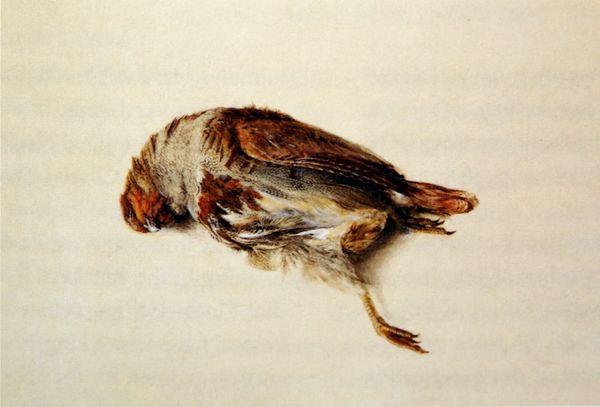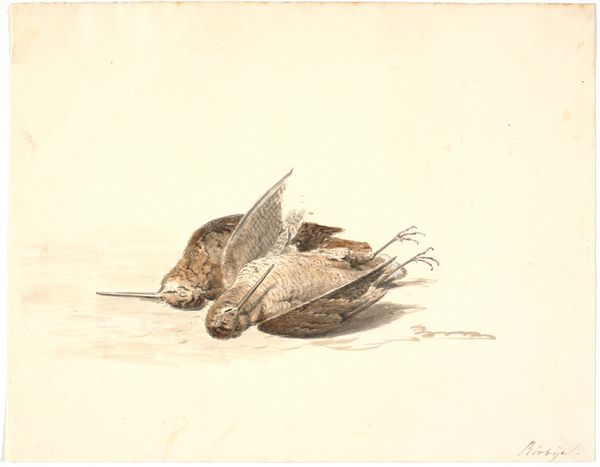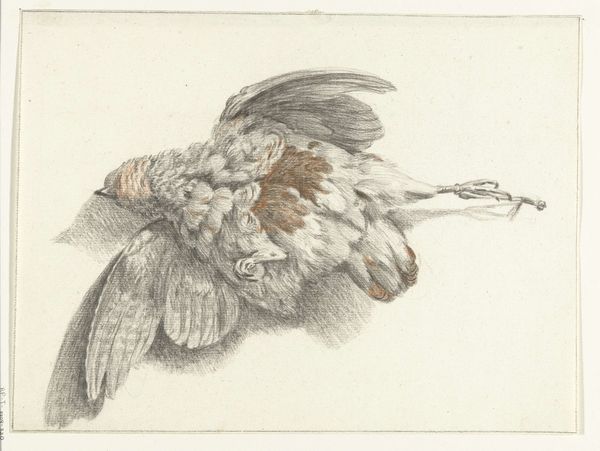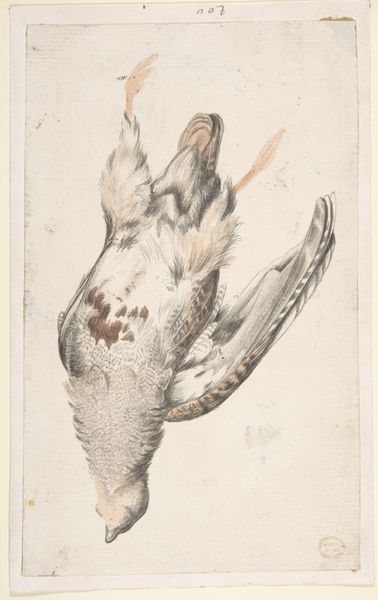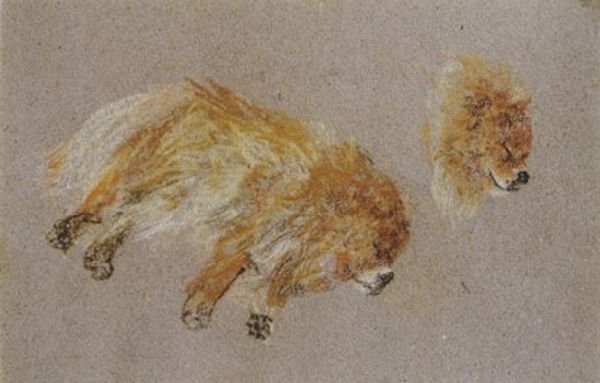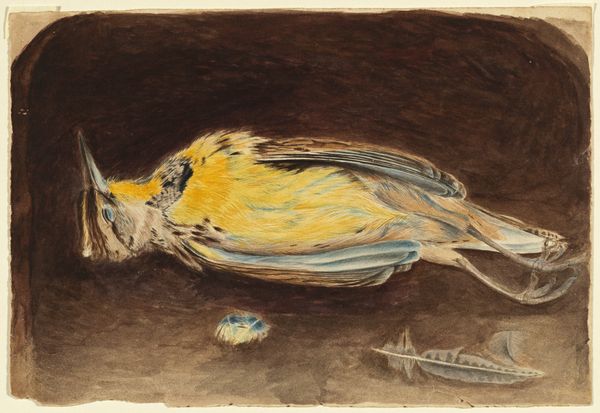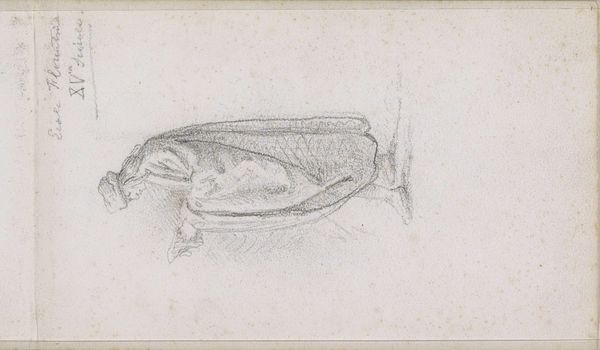
plein-air, watercolor
#
16_19th-century
#
plein-air
#
oil painting
#
watercolor
#
animal portrait
#
watercolor
#
realism
Copyright: Public domain
Curator: This is John Ruskin’s “Dead Pheasant,” a watercolor he completed in 1867. Editor: It's deceptively delicate, isn't it? At first glance, it's a beautiful study of color and form, but then the reality of what it depicts sinks in. There's a rawness there, an abrupt stillness in the body. Curator: Ruskin was fascinated by the close observation of nature, influenced by the Pre-Raphaelites and his emphasis on truth to detail. This work certainly reflects that. What strikes me is its context: Victorians had a romantic sensibility intertwined with stark mortality. This study seems poised between aesthetic appreciation and the dinner table. Editor: Exactly. Watercolour lends itself to rendering the bird's plumage – look at the iridescence he captured in the neck, playing against the stark white of what I suppose is its underside. The process mimics the fading beauty of the animal itself, doesn't it? Fleeting, like a memory of life. And was this used as part of his teaching? I know he tutored many students at the Working Men's College, was it demonstrating skill? Curator: Doubtlessly skill! As an educator, Ruskin saw close observation of nature as essential to both artistic training and moral development. Remember his mantra "truth to nature" and rejection of the classical idea. This pheasant, meticulously rendered, serves as an exercise, an argument, even, about the artist's role in understanding and representing the world honestly. These works become status objects displayed proudly; but from humble materials of observation and craft, a powerful statement is made, Ruskin argued for nature against industrial production in culture at large. Editor: I find myself wondering about the setting, where did Ruskin apply brush to paper here? The lack of a background makes me consider it in isolation, out of context, just like a commodity separated from the reality of its material life. But perhaps that white background heightens the details: each feather, each subtle shift in tone… I keep being drawn to its texture, seeing his labor, like a study of process. Curator: You’ve nailed Ruskin’s complex relationship to these issues and materials. Perhaps this image forces us to see beauty alongside a more complex reflection on art and material culture in the Victorian era. Editor: It's like an exquisite corpse: beautiful but undeniably… expired. Sobering and masterful!
Comments
No comments
Be the first to comment and join the conversation on the ultimate creative platform.
